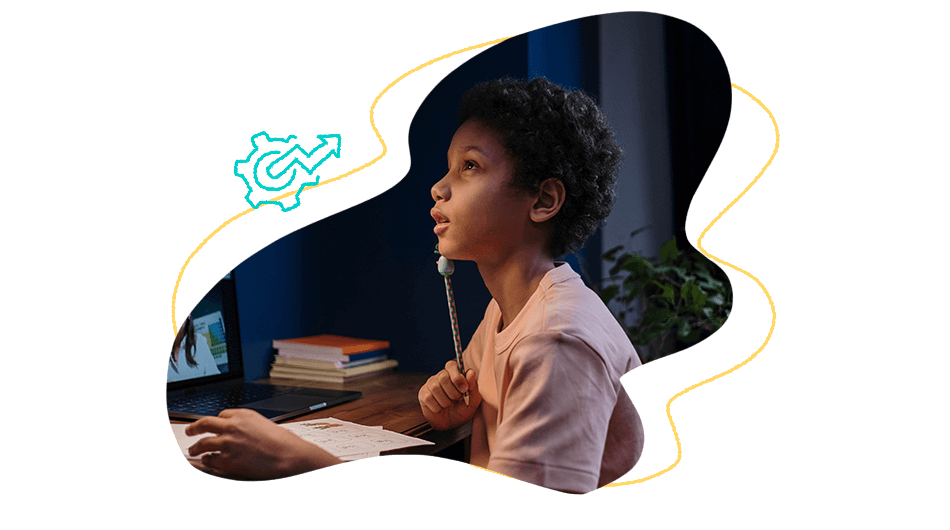Creating learner engagement during online classes is no easy feat. Even experienced teachers may struggle to keep learners involved. The virtual classroom adds more challenges to learner engagement such as, the lack of direct social contact. Still, you can keep high engagement levels in your virtual classroom if you follow some core principles. In this article we present the underlying rules that will help you create engaging learning resources. Use these strategies to draw your learners’ attention and keep them involved in the lesson. You can easily apply the suggested principles to plan and prepare presentations, class activities, and homework tasks.
Know your learners
The first and most important condition for engaging your learners is to know them well. As the saying goes, if you try to create learning for every audience, you will reach none. So, before your start teaching to a new group of learners, gather as much information about them as you can. For example, prepare a short online poll – no more than five questions, and ask learners to complete it before the training starts. Make sure to include questions about their age, background, goals, and expectations for the training. Another option is to create a group chat and ask learners to introduce themselves. This way, you not only learn about your students, but also help create a community. Use what you know about them to adapt your learning resources to their needs. This is not to suggest that you should recreate all of your training materials for each group – it’s the small tweaks that make the biggest difference. To reach students who are entirely new to the topic, add extra explanations. For those, who are more advanced, prepare more challenging exercises or additional reading.

Draw learners’ attention
The learners’ “physical” presence in your virtual classroom is no guarantee of their mental one. Nowadays, students are constantly bombarded with information through all sensory channels. As these various streams compete for your learners’ attention, so do you. To make lessons and learning activities engaging for the audience, you need to draw them in from the start. How can you do this? You have a number of options. For example, introduce the topic by asking a thought-provoking question or describing a challenging case. Then, ask your students to guess the answer. You can utilize the online whiteboard to make this more interactive. With larger groups, you can divide students into breakout rooms and have each team ponder the question or solve the problem together.
Tell learners what’s in it for them
To bump up engagement levels, tap into your learners’ intrinsic motivation. Put simply, tell them what’s in it for them. Explain how this class will help them manage their life better, perform at school or work, or prepare for an exam. This is especially true for adult learners with limited time and competing priorities. Before they start learning, students need to know how the knowledge and skills they acquire will improve their lives. That way you give them a sense of purpose and are keeping them engaged. Always make sure learners are aware of the goals of your lesson before you start teaching. You can do this by outlining the agenda in the description of the course and the lesson. A more interactive alternative is to record a short introductory video and upload it to the classroom, so learners can get familiar with the goals before the course or lesson starts.

Provide realistic and practical examples
Many learners get bored with theory, because it lacks the color and substance of real life. You can make learning resources more engaging if you back up abstract concepts with practical examples. An efficient strategy is to include case studies or scenarios that are close to the learners’ real-life situations and challenges. This way, learners can easily translate novel concepts to their familiar reality. Retention also improves, since people learn better when they tie new information to existing experience. You can either come up with our own examples or find some online. Depending on the subject you are teaching, you can present the content through different types of media: Text, images, video, or a combination. Add these resources as files or links to the file library of your virtual classroom for easy access during the lesson.
Keep exercises challenging, yet attainable
As a teacher, your job is to help learners master new knowledge and skills. If students are overwhelmed with the content and don’t receive adequate support, engagement levels drop rapidly. Learner engagement also suffers if the tasks are too easy or if you progress too slowly through the content. To keep the balance, add clear instructions, subtle hints, and relevant (but not obvious) examples in tasks and exercises. During an online lesson, be patient, nudge learners with guiding questions, and adjust to their pace. One way to do this in real time is to have learners work with the whiteboard to perform the task. This helps you monitor their progress and provide timely support, when needed.

Equip your learners for success
This principle of learner engagement is directly related to the previous one. When you create learning resources, keep in mind students’ previous knowledge, current progress, and individual learning pace. A great way to apply the principle into practice is to use scaffolding strategies. These include techniques such as breaking down material into smaller units and writing comprehensive step-by-step instructions. In addition, you could offer your students downloadable templates and examples, that are easy to follow as they work through the tasks. Your aim should be to provide learners with the right support to independently achieve their goals. As a result, learner confidence improves and engagement increases.

Provide equal parts structure and freedom
Be careful not to overwhelm students with too many tips, instructions, and templates. Otherwise, learners will feel suffocated and engagement will drop. To develop engaging learning resources, you have to find the right balance between structure and freedom. Therefore, it’s important to leave room for the learners to be creative and add something of their own to the task or product. For example, let them choose their essay topic or ask them to design an educational game for their peers. This helps personalize the learning experience, making your lesson more engaging and effective.
